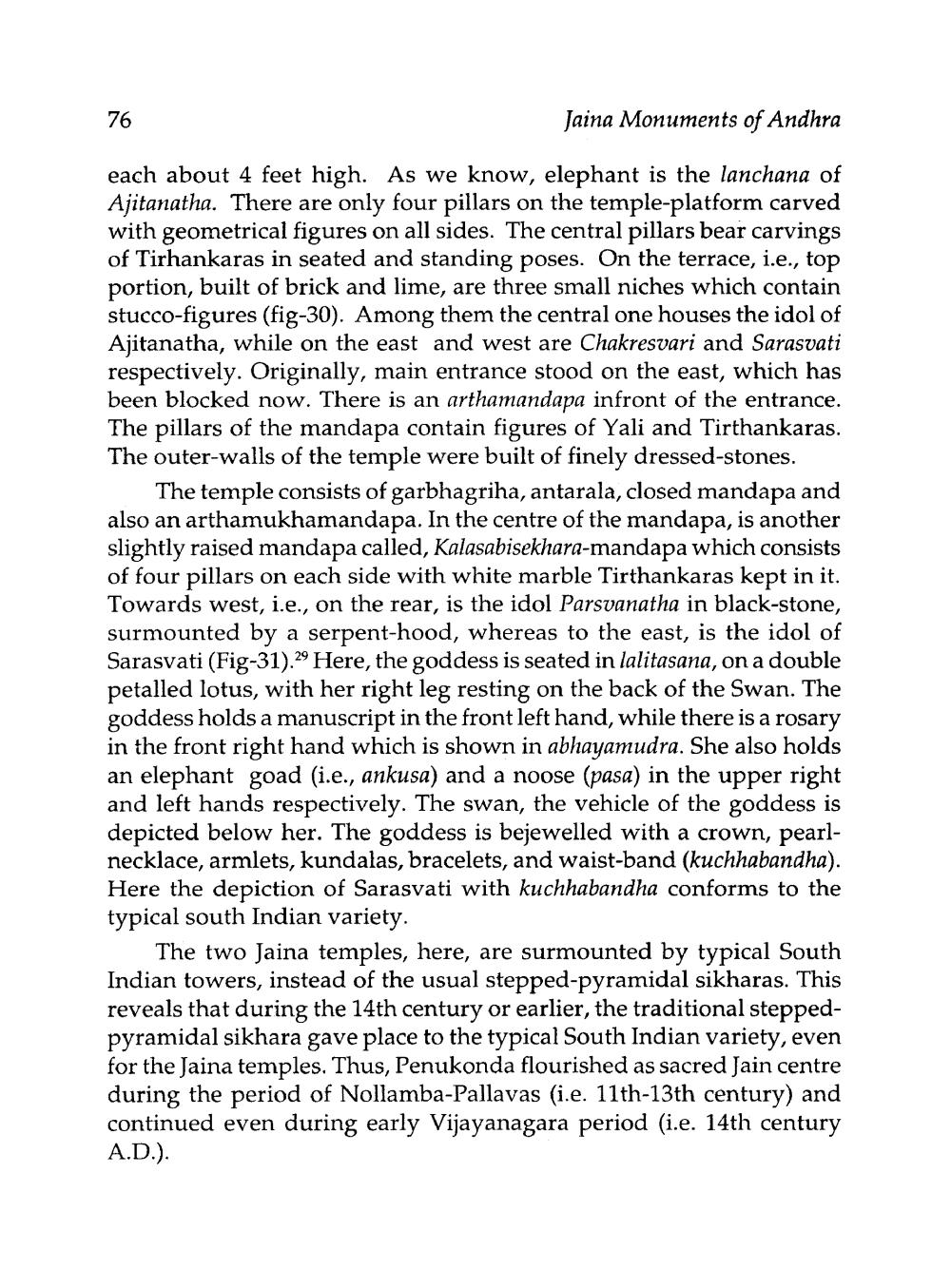________________
76
Jaina Monuments of Andhra
each about 4 feet high. As we know, elephant is the lanchana of Ajitanatha. There are only four pillars on the temple-platform carved with geometrical figures on all sides. The central pillars bear carvings of Tirhankaras in seated and standing poses. On the terrace, i.e., top portion, built of brick and lime, are three small niches which contain stucco-figures (fig-30). Among them the central one houses the idol of Ajitanatha, while on the east and west are Chakresvari and Sarasvati respectively. Originally, main entrance stood on the east, which has been blocked now. There is an arthamandapa infront of the entrance. The pillars of the mandapa contain figures of Yali and Tirthankaras. The outer-walls of the temple were built of finely dressed-stones.
The temple consists of garbhagriha, antarala, closed mandapa and also an arthamukhamandapa. In the centre of the mandapa, is another slightly raised mandapa called, Kalasabisekhara-mandapa which consists of four pillars on each side with white marble Tirthankaras kept in it. Towards west, i.e., on the rear, is the idol Parsvanatha in black-stone, surmounted by a serpent-hood, whereas to the east, is the idol of Sarasvati (Fig-31).29 Here, the goddess is seated in lalitasana, on a double petalled lotus, with her right leg resting on the back of the Swan. The goddess holds a manuscript in the front left hand, while there is a rosary in the front right hand which is shown in abhayamudra. She also holds an elephant goad (i.e., ankusa) and a noose (pasa) in the upper right and left hands respectively. The swan, the vehicle of the godd depicted below her. The goddess is bejewelled with a crown, pearlnecklace, armlets, kundalas, bracelets, and waist-band (kuchhabandha). Here the depiction of Sarasvati with kuchhabandha conforms to the typical south Indian variety.
The two Jaina temples, here, are surmounted by typical South Indian towers, instead of the usual stepped-pyramidal sikharas. This reveals that during the 14th century or earlier, the traditional steppedpyramidal sikhara gave place to the typical South Indian variety, even for the Jaina temples. Thus, Penukonda flourished as sacred Jain centre during the period of Nollamba-Pallavas (i.e. 11th-13th century) and continued even during early Vijayanagara period (i.e. 14th century A.D.).




